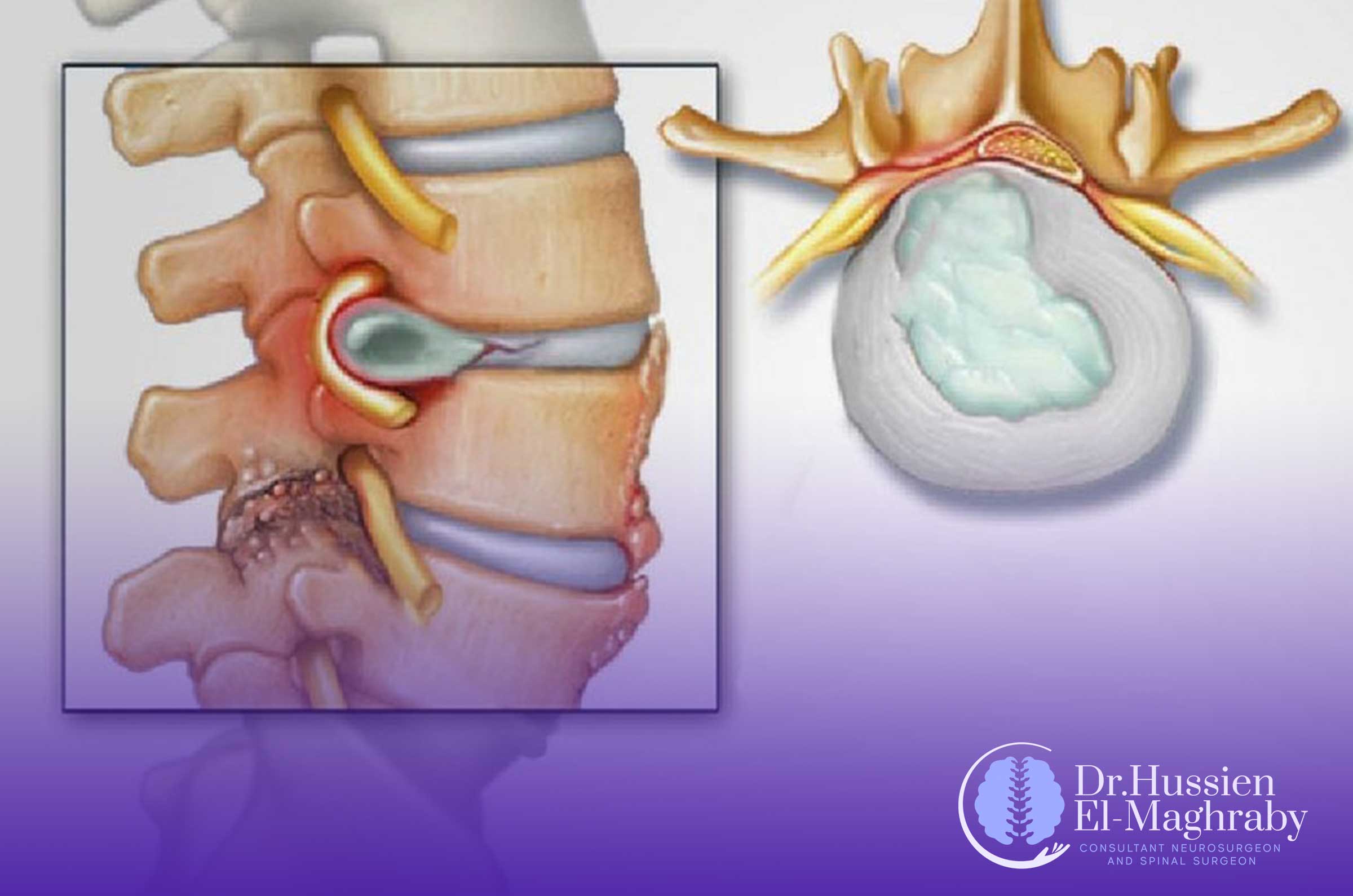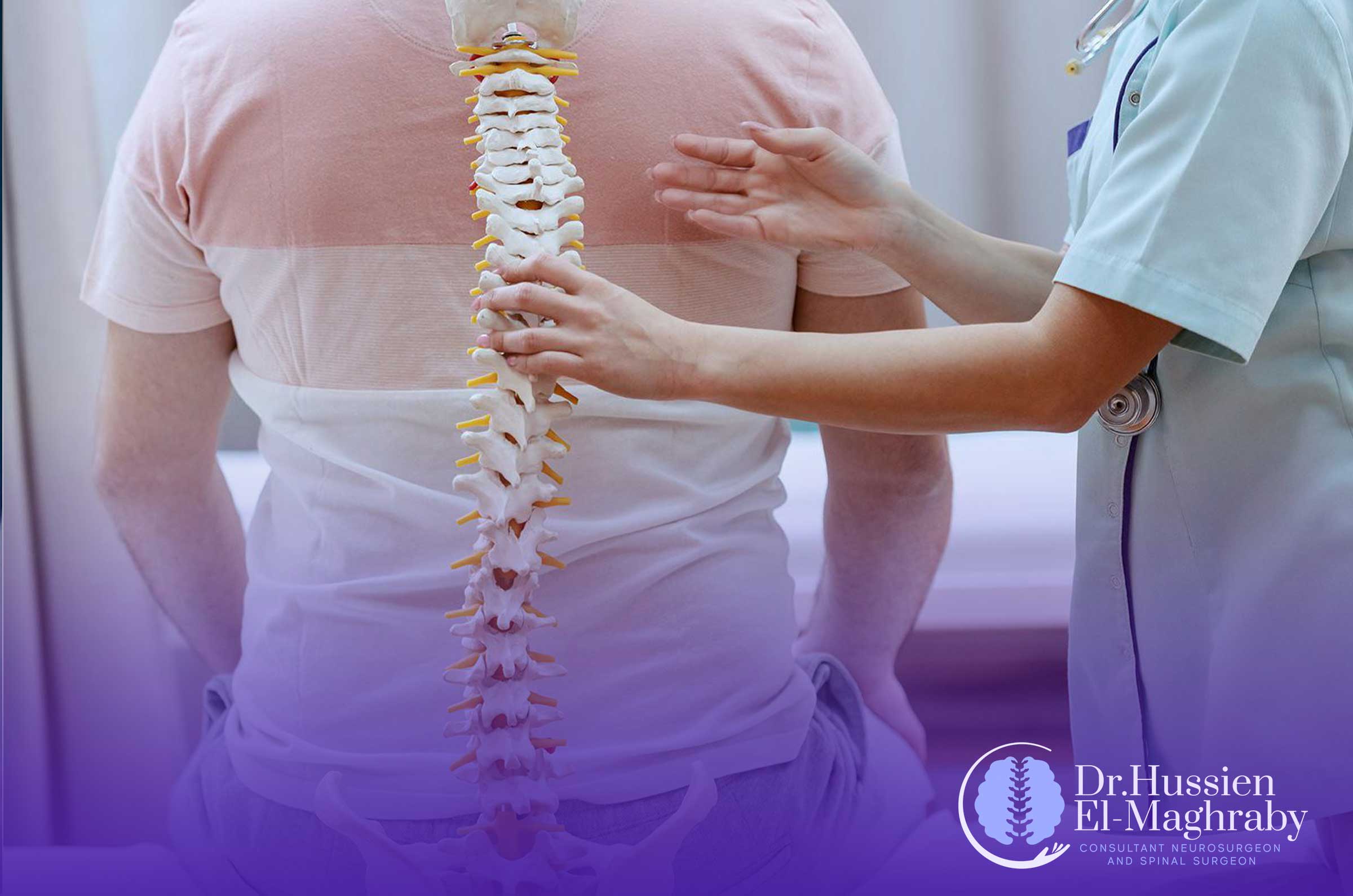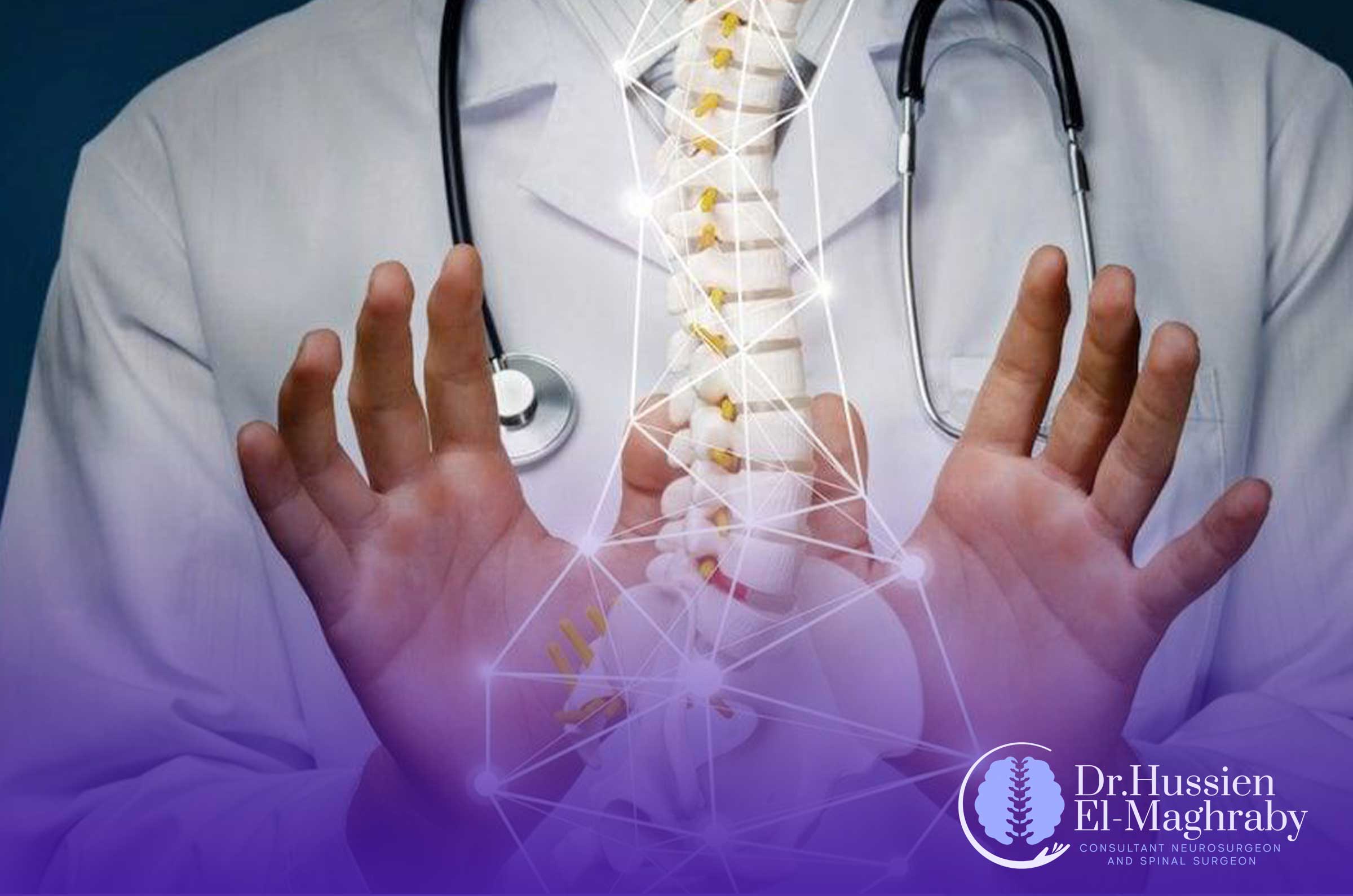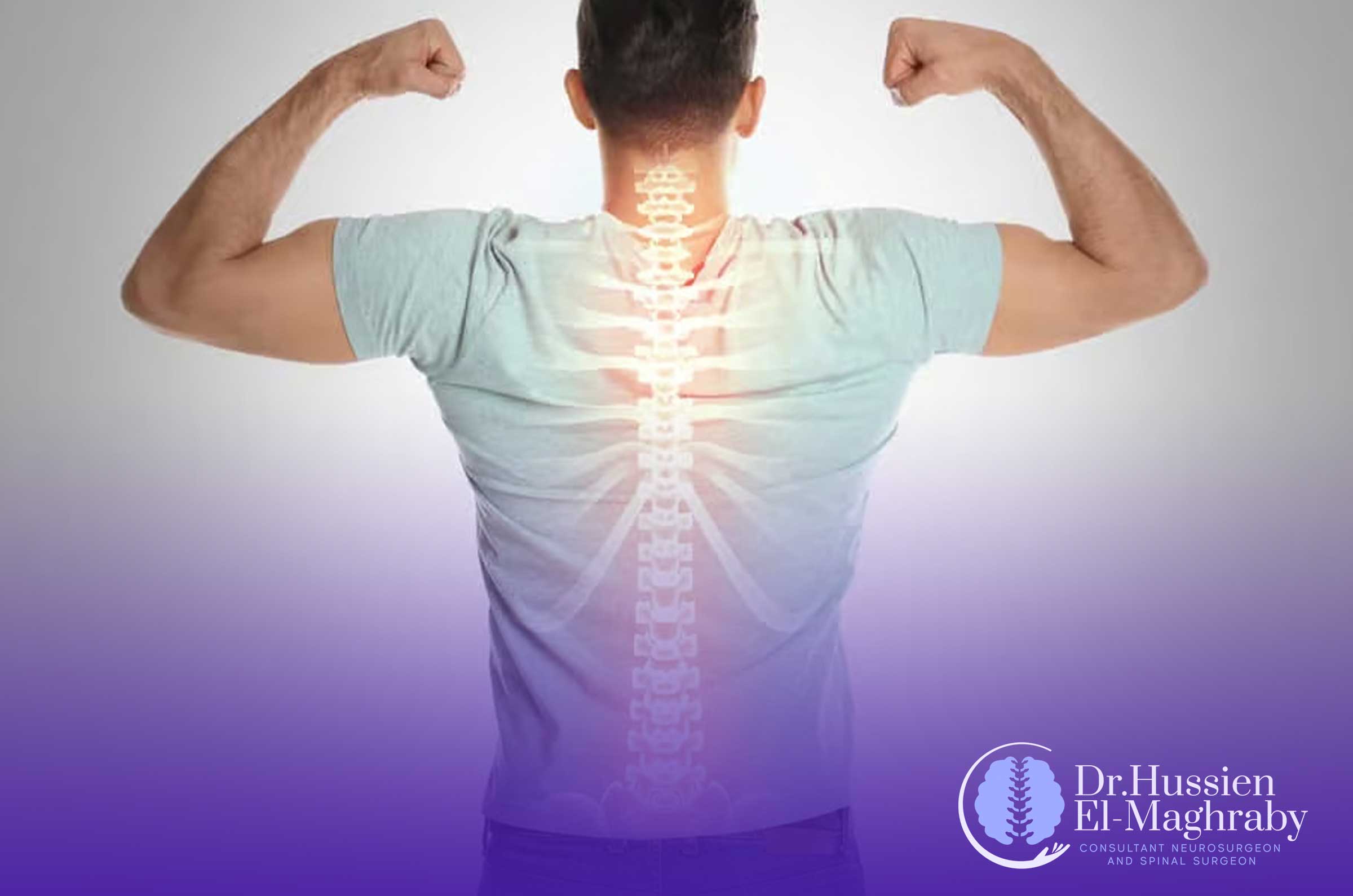Challenges of Spinal Stenosis and Coping Strategies

Living with spinal stenosis can be a challenging experience, often characterized by persistent pain and discomfort that can significantly affect daily life. When the spinal canal narrows, it puts pressure on the nerves, leading to a range of symptoms, from sharp pain to numbness and weakness. To learn how to manage this pain, it’s important to understand the causes of spinal canal stenosis and examine the nature of the pain it causes. Whether you are seeking relief or looking to gain a better understanding of this common condition, we aim to provide everything needed to improve your daily life.
Causes of Spinal Stenosis:
Spinal stenosis can occur due to several causes. These causes are divided into:1- Congenital Causes:
Congenital spinal stenosis happens from birth. Some of its causes include:• Issues related to the spine formation during fetal development, such as a narrow spinal canal.
• Dwarfism is a condition that affects bone growth and results in short stature due to a genetic mutation.
• Spinal dysraphism occurs when the spinal cord and nerve roots fail to form properly during fetal development.
• Congenital kyphosis is when the front edge of the vertebrae in the upper spine does not develop properly, resulting in an excessive outward curvature of the spine.
2- Acquired Causes:
Acquired spinal stenosis is a condition that develops later in life, after birth. Some of its causes include:• Arthritis: In the case of arthritis, the cartilage that reduces friction in the joints wears down. This condition can affect the cartilage between the vertebrae, leading to the growth of bone spurs in the spine as the body responds by forming new bone, which often results in the formation of bone spurs. These spurs extend into the spinal canal, causing a narrowing of the space and putting pressure on the spinal nerves. This condition commonly occurs due to aging.
• Paget disease of bone: This is a chronic condition that affects the skeleton, resulting in irregular changes in certain areas of the bones, such as the spine, leading to enlargement and increased bone fragility.
• Herniated disc: The discs act as shock absorbers and help cushion the spine during movement. As people age, these discs may dry out and lose their flexibility, leading to shrinkage. If a crack occurs in the outer edge of the disc, the inner spongy center can leak out of place. In this case, the protruding disc presses on the adjacent nerves, which may cause pain.
Pain of Spinal Stenosis:
The pain of spinal stenosis varies from person to person and can range from mild to severe. Symptoms include pain, stiffness, and numbness, which frequently intensify during walking or movement. The pain may radiate to the legs, arms, or buttocks, depending on the affected area. If the spinal cord is under pressure, symptoms may worsen to include numbness and, in severe cases, loss of bowel or bladder control and paralysis.Ways to manage spinal stenosis pain:
Certain home remedies and complementary treatments can help alleviate symptoms, such as:1- Heat therapy: involves using any heat source to help relax the muscles.
2- Cold therapy: involves applying ice or a cold pack wrapped in a towel to swollen areas to reduce swelling and pain.
3- Physical therapy: involves creating a healthy exercise program for the back that helps build strength and improve balance, flexibility, and spinal stability. Strengthening the back muscles can also contribute to increased spine flexibility.
However, these treatments may not be sufficient on their own to alleviate the pain of spinal stenosis, especially if the symptoms are severe. Thanks to the exceptional efforts and expertise of Dr. Hussien El-Maghraby; Consultant Neurosurgeon and Spinal Surgeon at University Hospitals Coventry and Warwickshire NHS Trust, England, United Kingdom, it is now possible to perform surgery in Egypt to widen the spinal canal using artificial intelligence and 3D printing. This technique offers relief from the pain of spinal canal stenosis without the complications associated with traditional surgery while providing customized global treatment standards designed specifically for you.
Share:
Surgery Tips

Customized 3D Solutions for Your Spine
The use of modern technology and 3D printing is a true revolution in the field of surgery, as it allows for personalized procedures that meet the needs of each patient.

The Role of Advanced Technology in Spine Surgery
Technological advances have made it possible to treat various spinal diseases and injuries in non-surgical ways, characterized by rapid recovery, pain reduction, and impressive results.

Tips for Spinal Cord Health
Spinal cord compression can occur and lead to various symptoms; however, such cases can be avoided through a set of unique tips provided by Dr. Hussien El-Maghraby.

Lower Back Pain
Many people suffer from lower back pain for various reasons, which can hinder them in their daily lives. Discover the available solutions and how to prevent the recurrence of pain after treatment.

